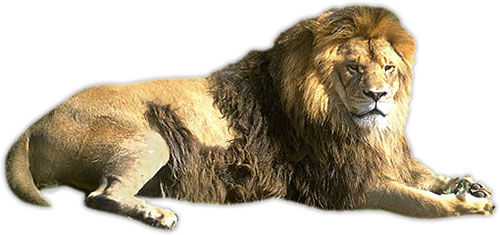B 9- RESPIRATION
- Created by: i13tnutman
- Created on: 01-10-17 19:15
RESPIRATION
- Respiration Definition: The process of transferring energy from food molecules (glucose) in every living cell.
- The energy transferred supplies all the energy needed for living processes
- Respiration in cells can take place aerobically or anaerobically:
- Aerobic respiration - uses oxygen
- Anaerobic respiration - uses no oxygen
- All chemical reactions inside cells are controlled by enzymes.
- Takes place in both plants and animals
- Respiration is an exothermic reaction- transfers energy to the enviroment
AEROBIC RESPIRATION
Respiration WITH oxygen
- Occurs constantly in plants and animals
- Respiration involves a series of many small reactions
- Most of these reactions occur inside the mitochondria in cells
- Each reaction is controlled by an enzyme
- Word equation:
- Glucose + Oxygen = Carbon dioxide + Water + Energy
- Symbol equation:
- C6H12O6 + 6O2 = 6CO2 + 6H2O + Energy
MITOCHONDRIA
- Mitochondria are rod- shapped structures found in almost all animal and plant cells.
- Most of the reactions in respiration occur in the mitochondria.
- The inner surface of the mitochondria is folded to increase the surface area for enzymes involed in aerobic respiration.

ENERGY USES (IMPORTANCE FOR RESPIRATION)
- The energy that is released during respiration is used:
- In cells, to carry out basic life functions and to build up larger molecules using smaller ones.
- In animals, to enable muscles to contract.
- In mammals and birds, to maintain a constant body temperature in colder surroundings.
- In plants, energy is transferred to convert sugars, nitrates and other nutrients into amino acids which are then built up into proteins.

RESPIRATION DURING EXERCISE
- The energy transferred during respiartion is used to enable muscles to contract
- When we exercise, our muscles contract more quickly and with more force, which requires more energy- so more glucose and oxygen.
- Glucose is stored as glycogen is in the muscles.
During exercise, the body's responses to the increased demand for energy include:
- An increase in heart rate, breathing rate and in breath volume:
- this increases the rate of gaseous exchange, so more oxygen is taken into the blood and more carbon dioxide is removed from the blood. - Heart rate increases:
- this increases the flow of oxygenated blood to the muscles - Glycogen stores in the muscle are broken down into glucose:
- this increases the amount of glucose that can be respired in cellular respiration.
All of these responses increase the rate of supply of glucose and oxygen to the muscles and the rate of removal of carbon dioxide from the muscles.
ANAEROBIC RESPIRATION
Respiration WITHOUT oxygen
- During vigorous exercise, if there is not oxygen reaching the muscles they become fatigued and anaerobic respiration is used to obtain energy- it allows you to keep on using your muscles for longer.
- Anaerobic respiration is the incomplete breakdown of glucose so it produces lactic acid.
- As the breakdown of glucose is incomplete and the glucose does not combine with energy, much less energy is released than during aerobic respiration.
Glucose = Lactic acid + Energy (less)
- Anaerobic respiration in other organisms:
- Plant and yeast cells can also respire without oxygen, but they produce ethanol (alcohol) and carbon dioxide instead of lactic acid:
Glucose = Ethanol + Carbon dioxide
- Anaerobic respiration in yest cells is called fermentation
- Used in the manufacture of bread and alcoholic drinks
OXYGEN DEBT
- Anaerobic respiration creates oxygen debt
- Oxygen debt = The amount of extra oxygen needed to react with the build up of lactic acid and remove it from the cells.
Oxygen debt repayment:
Lactic acid + oxygen = carbon dioxide + water
After vigorous exercise:
- The heart continues to pump faster and breathing rate remains high.
- This delivers the extra oxygen to the muscles which pays back the oxygen debt.
The bigger the debt (the larger the amount of lacic acid), the longer you will puff and pant/ heart and breathing rate stays high.
METABOLISM
- Metabolism is the sum of all the reactions in the body
METABOLIC REACTIONS:
- the conversion of glucose to starch, glycogen and cellulose
- formation of lipid molecules
- use of glucose and nitrate ions yo form animo acids which are then used to make proteins
- reactions of respiration
- reactions of photosynthesis
ROLE OF THE LIVER:
- detoxifying poisonous substances such as ethanol from alcoholic drinks
- passing the breakdown products to the blood to be excreted in the urine via the kidneys
- breaking down worn out blood cells & storing the ion until it is needed to synthesise more RBs
Removing Lactic Acid- Blood flowing through the muscles transports lactic acid to the liver where it is converted back in to glucose.
Related discussions on The Student Room
- Biology aqa a level »
- GSCE edexcel biology paper 2 »
- Unofficial Mark scheme: AQA GCSE Biology Paper 1 Triple Higher Tier 16th May 2023 »
- Biology Daunting »
- Gcse Respiration Biology »
- Alevel bio synoptic essay »
- Have i explained how the Bohr effect can impact the structure of haemoglobin correct? »
- Looking for Biology expert: Do yeast undergo fermentation or aerobic respiration??? »
- a question about respiration »
- GSCE edexcel biology paper 2 »
Comments
No comments have yet been made